Raising pigs for meat is a great step toward a self-sufficient homestead – and it’s incredibly fun, too. Out of all the livestock you can raise, I think pigs are some of my favorite animals. They’re smart, they’re curious, they’re loveable…and let’s not forget – bacon.
My husband and I started raising feeder pigs several years ago, and for many of those years, we purchased piglets from a local farmer.
However, we quickly realized as our pig-raising operation grew (and we began selling meat and other farm products as a business) that if we were going to save and/or make any kind of money, we couldn’t buy piglets anymore.
Today, we keep at least one breeding sow year-round and she supplies us with piglets twice a year. We are lucky enough to have the facilities necessary to keep her year-round. See my other article on winter pig care. on how we made that possible.
Also, we are able to AI-breed her so that we don’t also have to keep a boar.
However, for many people (particularly beginners), keeping a sow is simply not an option. There are lots of benefits to buying piglets from someone else, too.
First and foremost is that you can raise pigs on a seasonal basis, as raising pigs in the winter is hard. Not only that, but it can quickly get expensive.
Not all piglets are alike, though, and it’s easy to get duped when you’re buying piglets for the first time.
Here are some of the things you should consider – and look for – regardless of whether this is the 1st, 5th, or 50th time you’re buying piglets.
Before You Buy Pigs
1. Decide on Breed
Before you jump on the first ad you find on Craigslist for piglets, it’s essential that you put some thought into what qualities you’d like your piglets to have.
One of the most frustrating things I’ve seen is that most people who raise pigs will list their piglets for sale on Craigslist as “red pigs,” “pink pigs,” or “white pigs.”
They won’t indicate anything about the pig besides its weight and color.
As you can likely infer, this is not ideal.
There is a lot of variation between pig breeds, and that variation can make pigs more difficult to raise. For example, there are some breeds that are better for bacon, while others are better for lard. Some pigs are more curious than others, so you need to take special precautions against pigs escaping, while some tend to be more aggressive. Certain pigs grow faster than others, too.
I can’t tell you what kind of pig breed to buy. That will depend on your ultimate goals and preferences. However, you should do some research to make sure you understand the genetics of your pigs.
2. Determine the Timing
Most people buy piglets rather than older pigs, although you can certainly buy pigs that are a bit older so you don’t have to feed them as long. Particularly in the fall months, you’ll find better deals on these larger pigs because breeders don’t want to keep them through the winter.
Usually, the most common time to buy piglets is in the spring, but if you have the abilities necessary to raise pigs through the winter, you’ll save a lot of money by buying them in the fall.
Most piglets are sold before 8 weeks of age. Some people sell them at around 6 weeks, but the longer the piglets can remain with the sow, the better. They’ll have stronger immune systems and will not need to be fed starter feed. You might pay slightly more for the older piglets, but it could be worth it to not have to deal with disease or more expensive food.
In general, a healthy piglet will be around 20-40lbs when you buy it. Try to avoid buying pigs prior to 6 weeks. Although some pigs are weaned at 4 weeks, there are more benefits associated with keeping the piglets with their mothers.
3. Make Sure You Have the Proper Space and Housing Facilities
Don’t haul piglets home until you have a place to put them! You need a pen and, ideally, some sort of shelter. If you’re raising pigs in the summer months, you can get away with something as elementary as a 3-sided shack. However, the pen is vital.
I’ve read articles from lots of people who claim that electric fencing is not effective on young piglets because they can easily nose underneath it. However, they can dig beneath other kinds of fencing, too. For that reason, I recommend using a combination of electric fencing and hog panels (or cattle panels).
Do this at least when the piglets are young. You can also use several strands of electric wire, but you’ll have to make sure that the bottom wire is extremely low to the ground.
Pigs are curious and they are destructive. They are even more curious and destructive when they are young and eager to get out of whatever enclosure you’ve decided to house the pigs in.
My recommendation is that, before you bring your piglets home, build a sort of “training pen” inside your main pen (if you have a larger enclosure you’d like to ultimately house them in, that is).
The benefit of building a “training pen” is that it will enable you to keep a close eye on the piglets while they’re learning the ropes (aka finding the weak spots in your fence). Once they’ve gotten used to your fence (we use electric) you can let them explore the larger perimeter.
4. Familiarize Yourself With the Basics of Raising Pigs
Naturally, there are other factors that you’ll need to consider before you bring your piglets home. First and foremost, you need to educate yourself.
Do as much reading and research as possible before you buy piglets. Know what your piglets need to be fed. Also, decide what you want to feed them on demand or with a pre-portioned system (I recommend on-demand) and how you will water them.
Where to Find Piglets for Sale
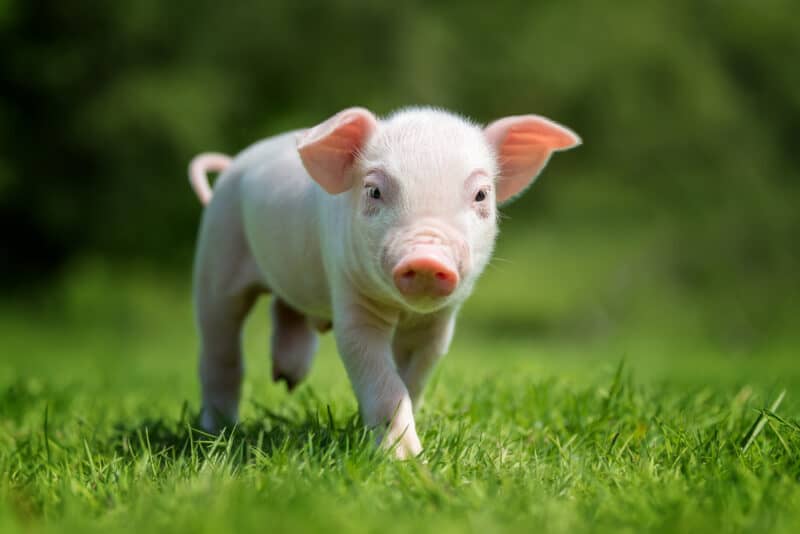
You can find pigs for sale just about anywhere, but that doesn’t mean you’ll be buying from a reputable source. Some of the most common places to look include:
- Online sites, like Craigslist
- Farm and garden store flyers
- Word of mouth, from family friends, and local farmers
- Reputable breeders and hog farms in your area
Tips for Buying Piglets
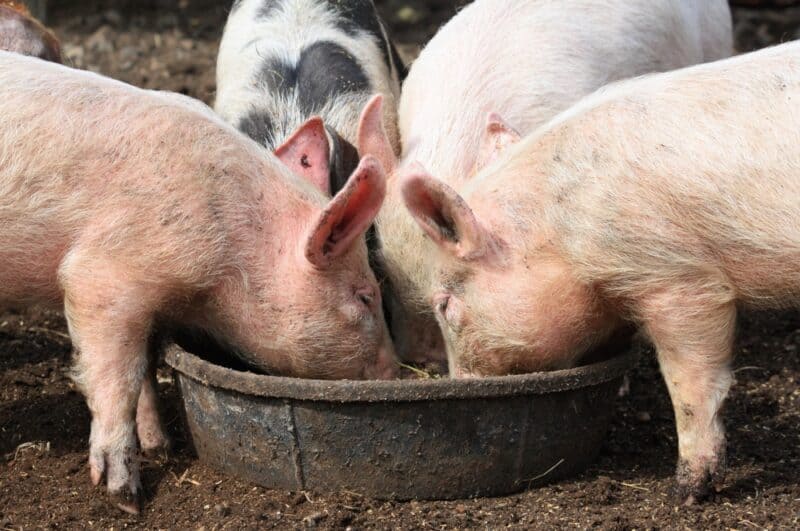
1. Avoid Auctions
There are lots of reasons to avoid local auctions when you’re shopping for pigs. It is usually next to impossible to trace the background on animals sold at auctions so you are often getting a breeder’s leftovers. They also might not be the healthiest.
Sometimes, animals sold at auctions are also deliberately drugged to make them more docile, too. This can give you a false impression of an animal’s demeanor that can come back to haunt you.
2. Clipped Teeth
Many pork producers – myself included – clip piglet teeth a few days after they are born. This is done to prevent them from injuring each other and from injuring their mother’s teats as they nurse.
We have our own reasons for clipping teeth, but many people view this as a highly unethical and inhumane practice. Depending on your opinion on the issue, it pays to ask the question of the breeder ahead of time.
3. Castration
Castrating pigs is highly controversial – just as controversial as the teeth clipping conversation, in fact.
There are several reasons to consider castrating pigs. Of course, if you’re against castration for whatever reason (some people find it to be cruel), know that you will probably be able to get a better deal on your pigs. However, you may have additional problems to deal with later on, too – so it could be a wash.
In general, I recommend castrating male pigs and searching for piglets who have already been castrated. As somebody who has to go through this process every year, I can tell you that castrating male piglets is not enjoyable and definitely not for somebody who is new to raising pigs.
However, castration is often essential. If you raise piglets of opposite sexes, know that females can get pregnant a lot sooner than you might have your pigs ready to go to the market.
If there are any delays in butchering your pigs, you may end up with extra little piggies running around! Male pigs, like other male animals, produce testosterone, that can taint the flavor of the meat.
My advice? Look for pigs that have been castrated, or buy all-females. Male pigs need to be castrated at around 6 weeks of age. If you’re buying a non-castrated pig after this date, be wary.
4. Vaccines/Potential Diseases
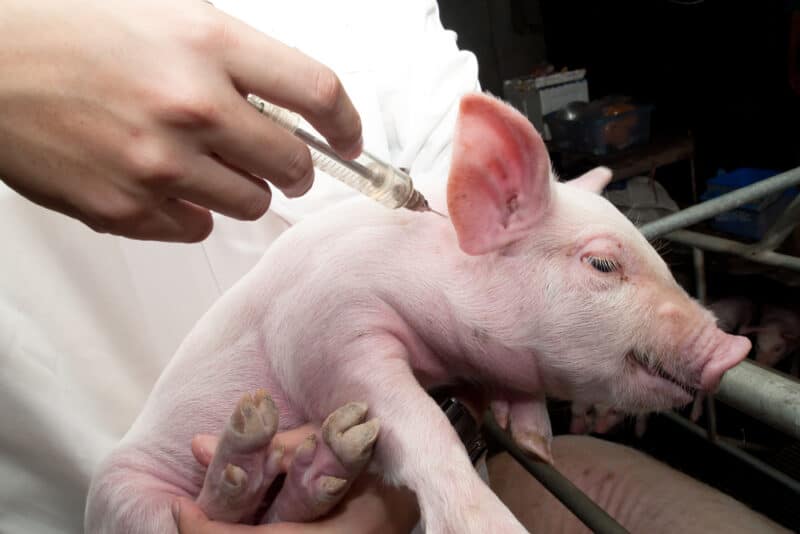
You will also need to check with the farmer or breeder to find out whether the herd was subjected to any diseases. Also, you need to find out if it has been vaccinated.
There aren’t many vaccines that are considered “universal” for pigs. This is different from other kinds of livestock (for example, it is universally recommended that all sheep be vaccinated with CDT).
If there are certain diseases that are prevalent in your area, make sure the pigs have been vaccinated. One disease that many breeders recommend vaccinating against is swine erysipelas, also known as diamond skin disease.
You might also want to ask about internal parasites. Pigs don’t necessarily need to be chemically dewormed. As long as they are on good ground and are in a solid, healthy condition, you can avoid it.
Regardless of where you stand in regards to chemical deworming, it’s a good idea to at least ask about parasite control. Whether it is a drug or simply garlic, it’s good to know what your pigs have consumed.
5. Transportation
You need to have a way to get those new piglets home! Make sure you figure this out before you commit to buying piglets two hours away (been there).
You can move piglets in a box on the bed of a pickup truck, in a trailer, or in some other kind of contraption. However, make sure that your method of moving piglets is not only comfortable for the piglets (you’ll need to factor in the weather) but also roadworthy and legal.
Most piglets travel quite well, particularly if they have companions with them. Do not make the mistake of assuming you can just carry your piglet home on your lap, however!
6. Quarantining New Arrivals
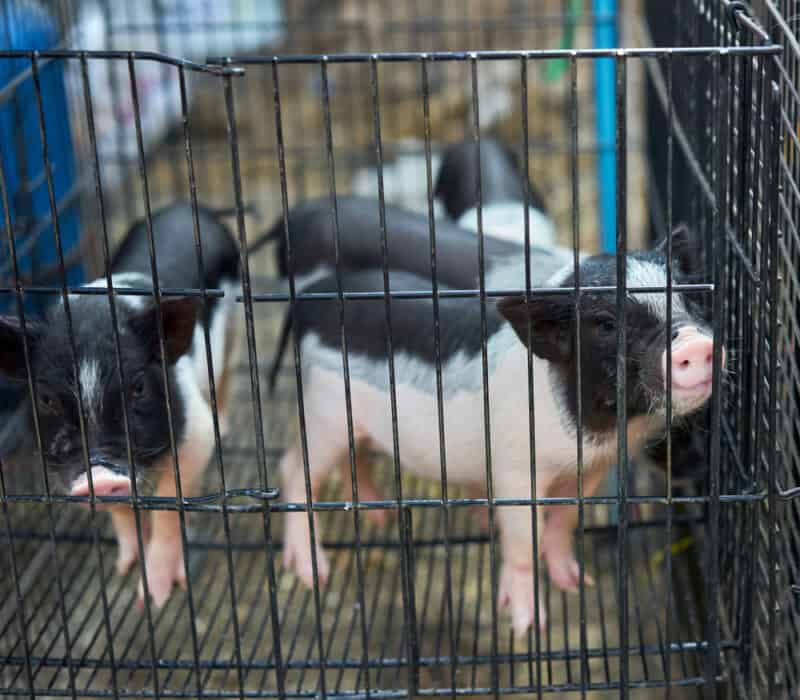
Regardless of how much you trust the farmer from whom you purchased your piglets if you are buying just a few piglets and introducing them to an existing herd, please quarantine them upon their arrival.
There are all kinds of diseases that can be transmitted between pigs. You often won’t have any indication that a piglet is sick until it has been at its new destination for quite some time. One common problem of this nature is shipping fever. Also known as Pasteurella, it’s a disease that is commonly found in pigs, horses, cattle, and other animals.
Shipping fever takes some time to show symptoms, but it can rapidly infect the rest of your herd if you aren’t careful. Give your piglets a few weeks on their own to make sure they don’t get everyone sick – and so you can treat them more easily if they do show symptoms.
One Final Tip? Call the Butcher
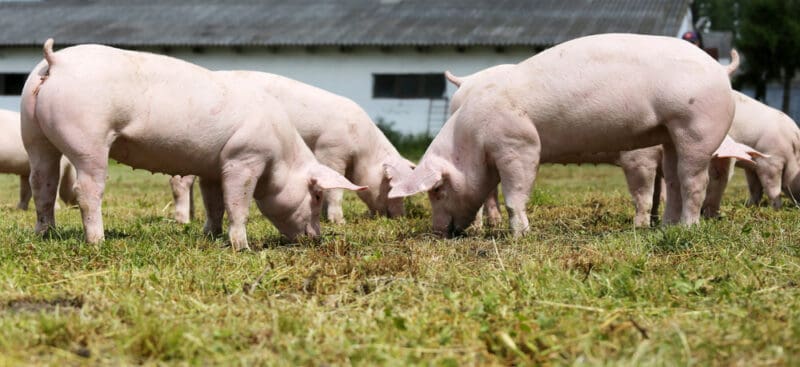
My last tip for you when you are buying piglets. Have a plan in advance for what you will do with them. If you plan on keeping your pigs to be raised as breeders, then congratulations! Your plan is already in place.
However, if you plan on raising these piglets for meat, you may want to put in a call to the butcher now (or decide if you are going to do it yourself).
Although we do much of our own slaughtering on-farm, we work with a local butcher who handles all of the skinning, gutting, cutting, and smoking.
This adds an additional expense to the cost of buying and raising piglets. However, it’s worth it, since smoking, in particular, isn’t something we are set up to handle on our farm (nor are most people).
Plan ahead when buying piglets, especially if you want someone else to handle the butchering. Especially if you live in a remote area, you’ll find that those slots fill up fast!
Like everything, buying and raising piglets requires good forethought and planning. As you become more accustomed to the process, you’ll likely find that it’s a highly enjoyable experience that you look forward to each and every year.
